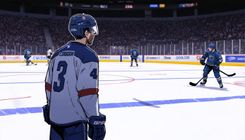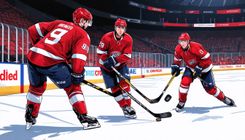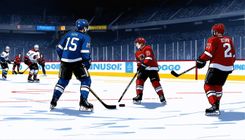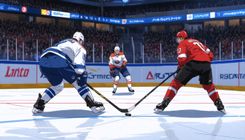Prospect Pool Rankings: An In-Depth Look at NHL Futures

In this year's prospect pool ranking, certain entries are predictable, particularly when considering which teams dominate this list. However, a notable observation in this year's assessment is the disconnect between a team's prospect pool and their position in the overall standings. Traditionally, one would expect teams with lackluster prospect pools to be vying for a top spot in the rankings, yet this season shows that many teams do not fit this mold. This can be attributed to various factors such as trades, prospects transitioning to full-time NHL roles, and disappointing player development outcomes. As a result, the rankings in the lower tiers resemble groupings more than strict rankings, with teams showing similar developmental challenges. The methodology for this analysis factors in newly drafted players, trades, player development over the past season, and projections for their upcoming performance. This evolving landscape will be monitored closely as these athletes continue to develop over the next year.
The term 'prospect' is defined here as anyone entering the 2025-26 season with rookie status or fewer than a set number of games played. Among the notable prospects to watch are Linus Eriksson, Gracyn Sawchyn, and Jack Devine. Despite winning the Stanley Cup in two consecutive seasons, the Florida Panthers find themselves at the bottom of the rankings primarily due to a barren prospect pool. However, there are still promising players, with Jack Devine standing out as a right wing from the University of Denver who has displayed a strong work ethic and skating ability. Gracyn Sawchyn, transitioning from the Edmonton Oil Kings to the AHL, is expected to impress with his hockey IQ and tenacity. If the Panthers make a strong playoff push again, either Devine or Sawchyn might secure a spot on the roster as an affordable depth option.
Analysis of the Vancouver Canucks' prospect pool reveals a lack of high-end talent, primarily filled with depth options, which does not aid their competitive standing in the league. Exceptional talents like Jonathan Lekkerimaki must not be mishandled by the organization, as his skills will be crucial to the team's future achievement. Newly drafted Tom Willander is transitioning to the pros from Boston University, where his playing style is expected to translate well to the NHL level. Meanwhile, Braeden Cootes, a favored selection in the 2025 Draft, needs proper development to reach his full potential. The Los Angeles Kings' prospects are similarly underwhelming, with standout Liam Greentree demonstrating elite offensive capabilities, though the overall pool lacks excitement.
In Ottawa, the Senators are in a better position after a successful run last season. While their prospect pool is not particularly strong, players such as Logan Hensler and Carter Yakemchuk show promise. Hensler, expected to develop with time, offers significant upside, and Yakemchuk's playmaking skills are commendable, suggesting he should be moved to the AHL for further challenges. The Toronto Maple Leafs face scrutiny for having a weak prospect pool that does not match their postseason performances. However, notable players like Ben Danford, who excelled in his gameplay, could add value if developed correctly. Easton Cowan is expected to debut this season, though there may be an adaptation phase as he transitions from junior to the NHL environment.
The Boston Bruins are experiencing a resurgence in their prospect pool rankings, largely due to the presence of promising player James Hagens. His multifaceted skill set has reignited hope within the organization, and Fraser Minten's acquisition adds depth to their future roster. The Winnipeg Jets continue to carry a diverse yet moderate talent pool, with players like Brad Lambert demonstrating potential despite stagnation. Brayden Yager's recent acquisition from Pittsburgh raises questions about how his offensive game will translate. The Edmonton Oilers receive recognition for their prospects, particularly Matthew Savoie and Isaac Howard, who showcase high-level offensive skills but could see a decline in rankings due to gaps in overall depth.
As the prospect evaluations progress, the Vegas Golden Knights and the Dallas Stars are grouped in similar tiers, demonstrating the flexibility of rankings based on player development trajectories. The Anaheim Ducks appear to be in a decline, yet players like Roger McQueen remain intriguing prospects worth monitoring. The Calgary Flames feature compelling talents, such as Zayne Parekh, who has an immediate impact at the NHL level. Meanwhile, the Philadelphia Flyers seem to have gained momentum in drafting, with players like Porter Martone expected to thrive under improved circumstances. Lastly, the Chicago Blackhawks and the Montreal Canadiens are battling for higher ranks, showcasing strong drafts that may lead to promising seasons ahead.
In conclusion, while the landscape of prospect pools is in flux, teams must focus on developing their selected athletes effectively. Each franchise’s ability to nurture talent will determine not only their immediate success but will ultimately shape their long-term viability within the league. Monitoring these developments allows for a deeper understanding of team strategies and future potentials as the next NHL season approaches.









